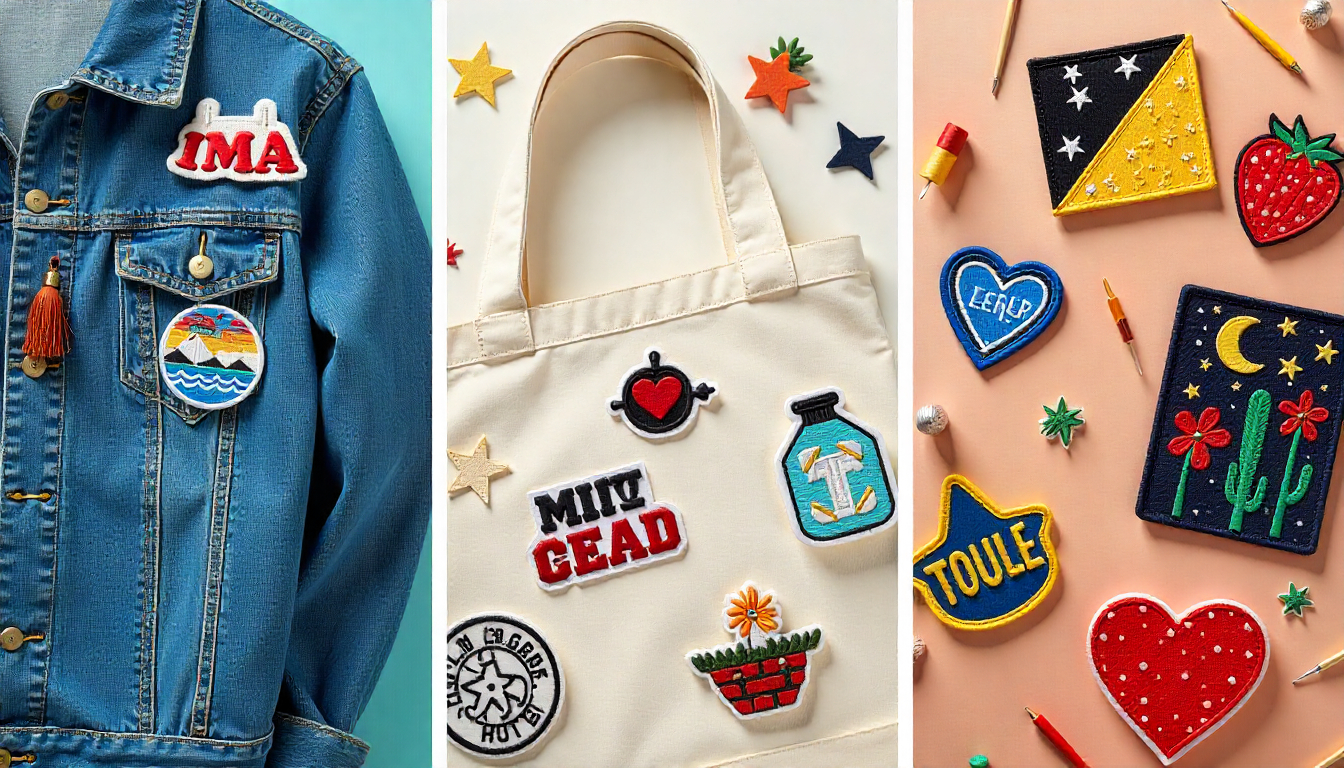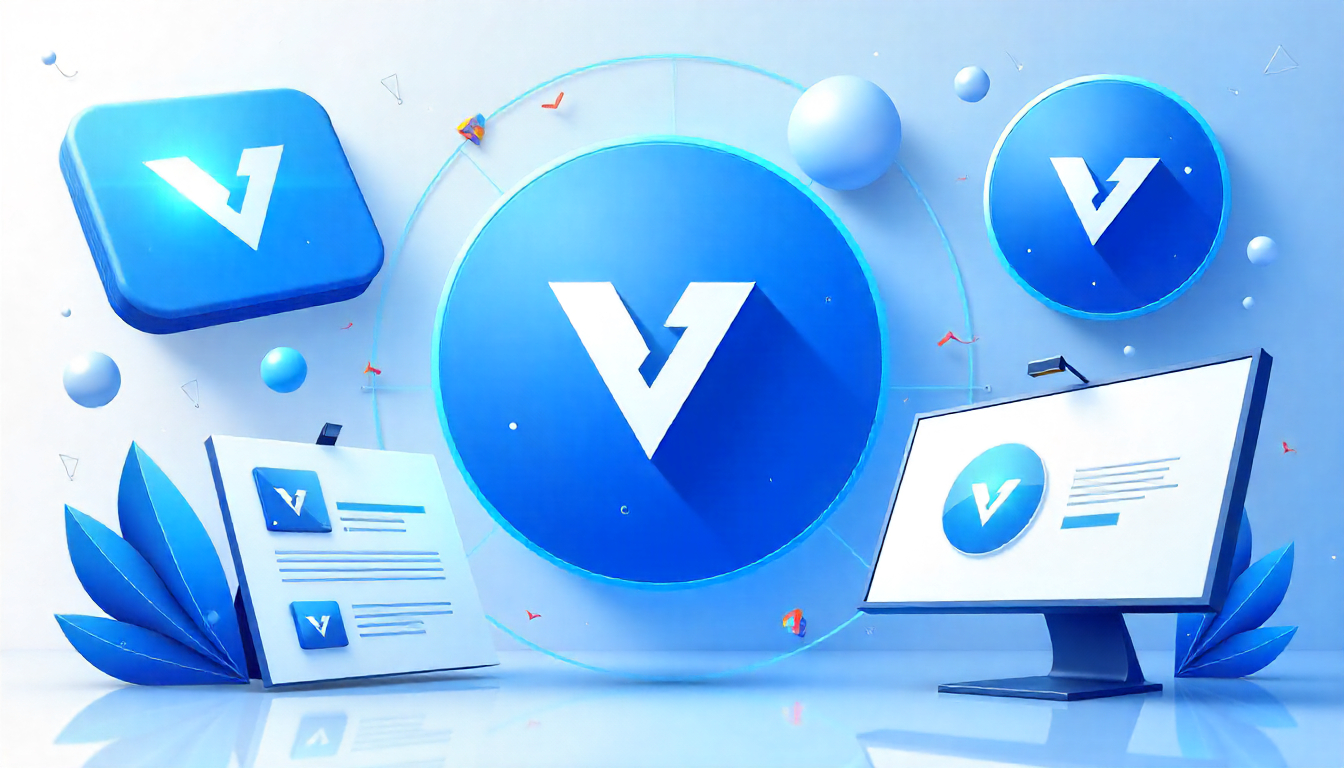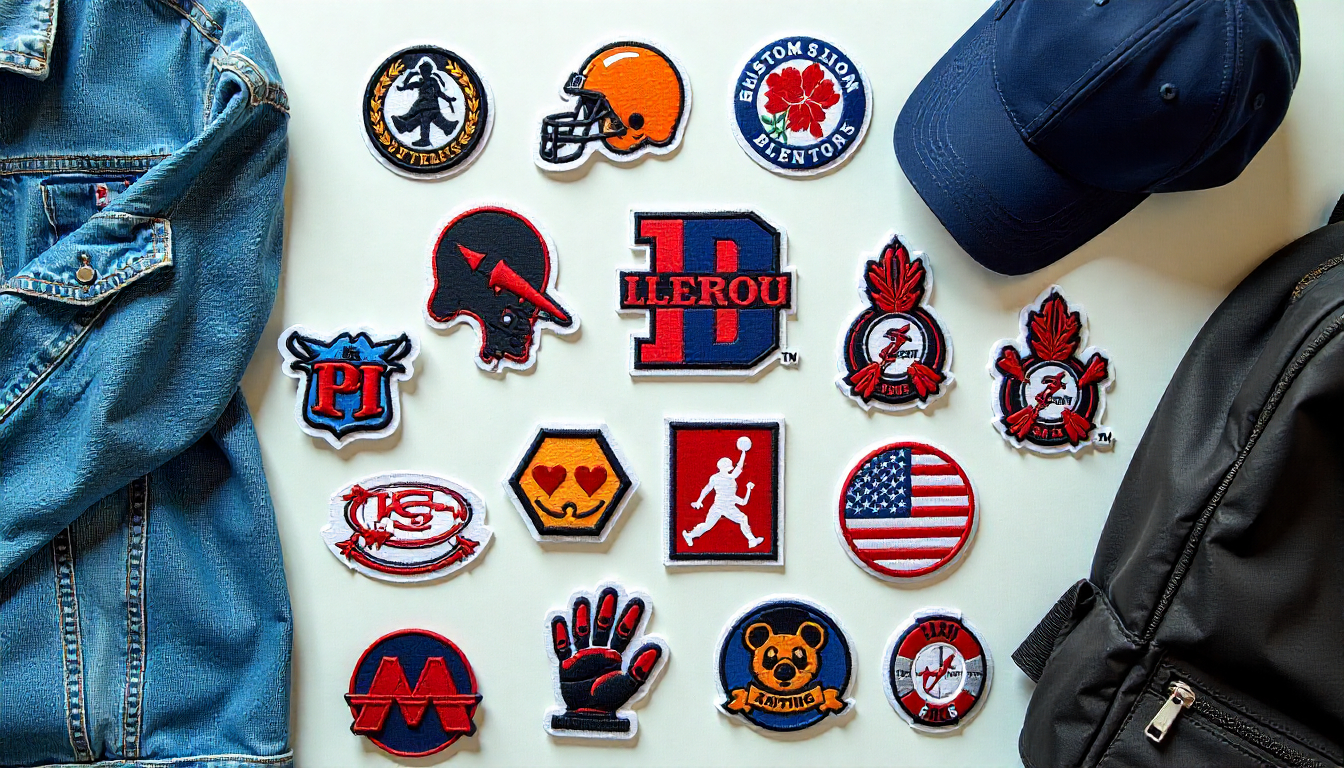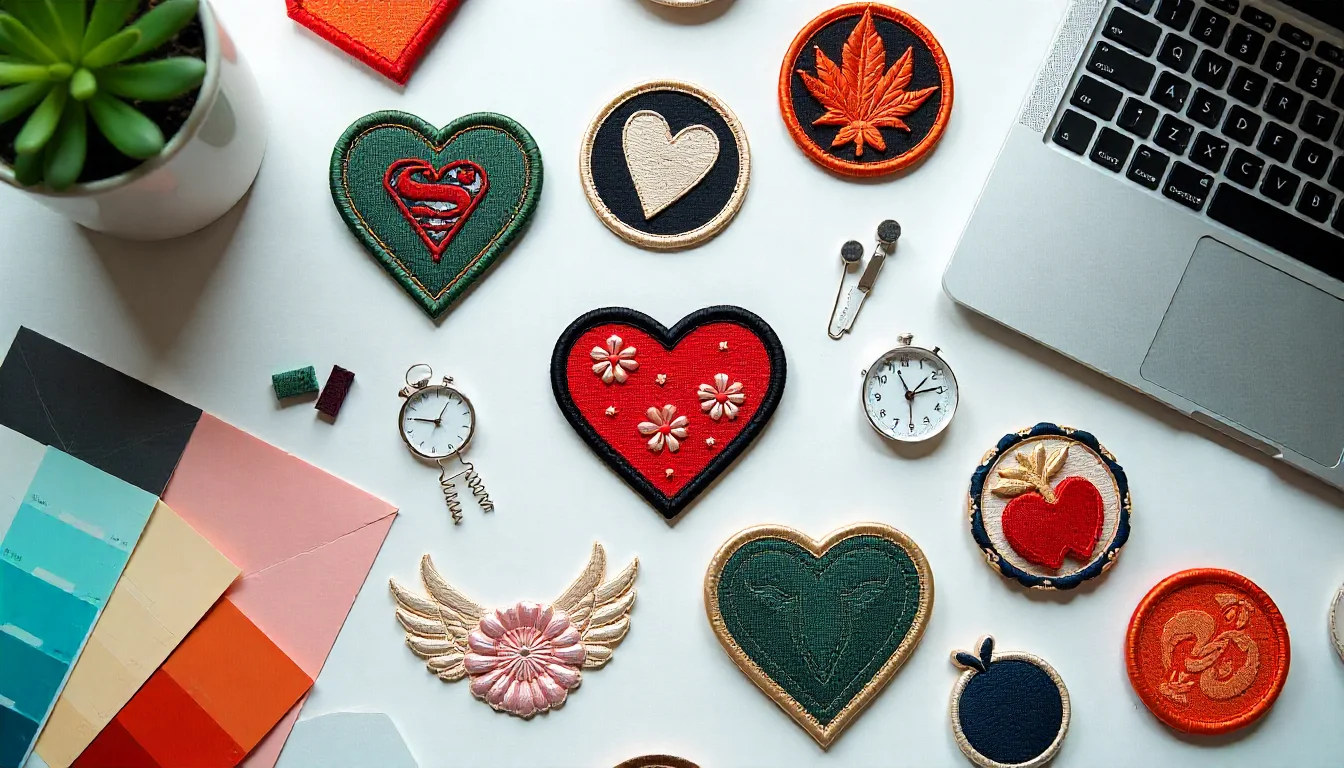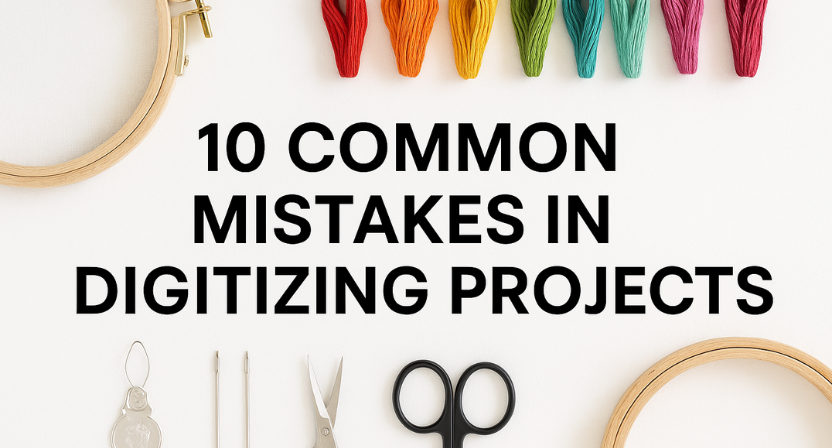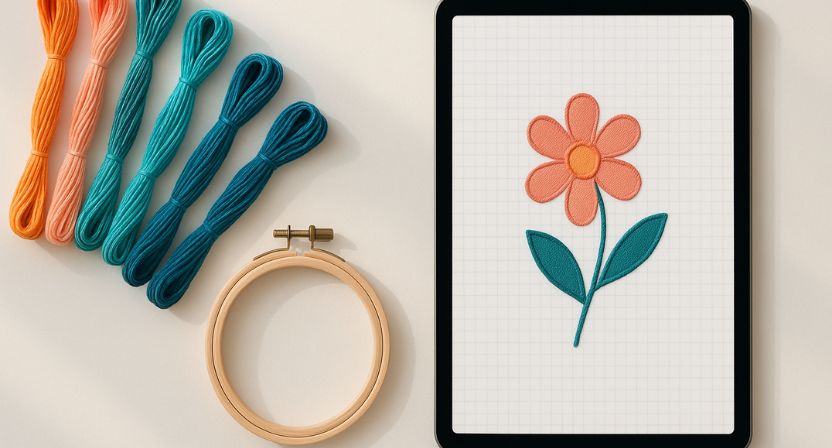Starting a home-based embroidery business is an exciting venture that blends creativity with entrepreneurship. For beginners, choosing the right materials and tools is crucial, it can make the difference between smooth sailing and constant frustration.
The proper equipment is not only for professional-looking results but also saves time and reduces errors. In this beginner-friendly blog, why each item is important for creating beautiful embroidered products efficiently, and having these essentials on hand will set you up for success from day one.
Best Tools for Your Embroidery Business
Starting an embroidery business requires the right tools to ensure you create quality products and work efficiently. Here are the basic items you’ll need to get started.
1. Embroidery Machine
The embroidery machine is the heart of your business, it’s the tool that does the actual stitching. Unlike a regular sewing machine, an embroidery machine is specialized for creating designs and patterns automatically. These machines come in various types, from affordable single-needle models to larger multi-needle commercial units. When starting out, you’ll want a reliable machine that fits your needs and budget.
2. Embroidery Threads
High-quality embroidery thread is the lifeline of your creations. Embroidery threads are specially made to be stronger and more lustrous than regular sewing thread, which means they can withstand the high-speed stitching of the machine without snapping. In short, investing in good threads (and plenty of them) will help your embroidery projects shine and keep clients happy.
3. Embroidery Needles
Embroidery needles may be small, but they are essential tools that can greatly impact your stitch quality. These needles are not the same as regular sewing needles – they are designed specifically for machine embroidery. Using the correct needle (and replacing it regularly) is important because a worn or wrong type of needle can cause thread breaks, skipped stitches, or even damage the fabric.
4. Bobbins and Bobbin Thread
If embroidery thread is the lifeline of your design on the top side, bobbins and bobbin thread are its unsung heroes on the underside. A bobbin is a small spool that holds the thread for the underside of the embroidery. Your machine uses the bobbin thread in combination with the top thread to form every stitch. This leads to balanced, professional-looking stitches on both sides of the fabric, which your customers will appreciate.
5. Stabilizers and Backings
Stabilizers (also called backings) are materials that you attach to fabric to support it during embroidery. They are absolutely crucial for achieving crisp, non-puckered designs. Stabilizers are the foundation that keeps your embroidery looking neat and readable – they’re a small investment that has a big impact on quality, helping you maintain a professional reputation from the start.
6. Embroidery Hoops and Frames
Embroidery hoops (or frames) are devices that hold your fabric tight and flat while the machine stitches out the design. In machine embroidery, hoops usually come as a pair of interlocking rings or a clamp system that sandwiches the fabric (with stabilizer) in between. This will give you the flexibility to take on a variety of orders, from small emblems to larger designs, with confidence that your fabric will stay put and the results will look great.
7. Fabric and Blanks to Embroidery
Aside from the equipment that does the work, you’ll need something to embroider on! In the embroidery business world, the items you stitch on are often called “blanks.” This knowledge will help you avoid mistakes on customer pieces. Having the right blanks and fabrics on hand means you can promptly create samples or orders, and the finished embroidered item is high-quality and appealing.
8. Embroidery Scissors and Thread Snips
Embroidery involves a lot of trimming – cutting threads close to the fabric and snipping off jump stitches (threads that connect parts of a design). This is where embroidery scissors or thread snips come in. These are small, sharp scissors designed for precision cutting. They often have a fine point or a curved tip that allows you to get under tiny threads without accidentally cutting the fabric.
9. Marking and Measuring Tools
Precision is important in embroidery placement, and marking tools help you achieve that. Marking tools can include water-soluble pens, air-erasable markers, tailor’s chalk, or heat-disappearing pens – anything that lets you draw guide lines or center marks on your fabric and then easily remove the marks later.
10. Embroidery Design Software
Embroidery design software (often called digitizing software) is a digital tool that allows you to create or edit the designs you want to stitch. While some embroidery machines come with built-in designs or allow basic editing on-screen, having software on your computer gives you far more control and flexibility.
Why Choose Impact Digitizing for Embroidery Business Support
Impact Digitizing understands what it takes to start and grow a successful embroidery business. From expert digitizing services to guidance on using the right tools and materials, we help you achieve clean, professional results from day one.
Conclusion
Starting an embroidery business from home is a rewarding journey, and having the right materials from the start will set you on the path to success. These 10 basic tools and supplies – from the embroidery machine and threads down to stabilizers and software – cover all the essentials you need to begin turning plain items into beautifully embroidered products.
FAQs (Frequently Asked Questions)
Q1: Do I need a special embroidery machine to start, or can I use a regular sewing machine?
A: To do professional embroidery, you will need an embroidery-capable machine. A regular sewing machine can do very basic embroidery if it has a free-motion setting, but it won’t be efficient or consistent for business purposes.
Q2: Can I use regular sewing thread for embroidery?
A: It’s not recommended. Regular sewing thread and embroidery thread are different in weight, finish, and strength. Embroidery thread (like polyester or rayon thread) is usually a bit thinner but stronger and has a sheen that makes designs pop.
Q3: What types of stabilizer do I need as a beginner?
A: As a beginner, it’s good to have a few basic types of stabilizer on hand to cover most projects. Cut-away stabilizer is great for knit or stretchy fabrics (like T-shirts) because it provides strong, permanent support – you’ll trim the excess, but some stays behind the stitches to keep them stable.
Q4: Is embroidery software necessary right away, or can I start without it?
A: You can start without owning embroidery digitizing software if you plan to use the designs that come with your machine or purchase premade embroidery designs online. Many beginners begin by stitching ready-made patterns and monogram fonts, which is perfectly fine.


